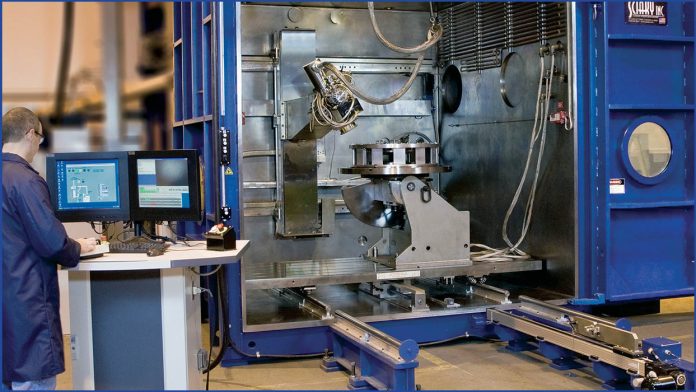The World Economic Forum has embarked on the Digital Transformation Initiative research project to explore the impact of digitalization across 13 major industries. The research identifies several technologies that are expected to have the most impact in transforming business and society.
3D Printing: manufacturing on demand
In 3D printing, or additive layer manufacturing (ALM), objects are created from digital blueprint files by laying down successive layers of material. The range of materials that can be used with 3D printers has expanded significantly over the last decade, enabling highly optimized, on-demand and customizable solutions at little additional cost per unit.
Logistics industries and value chains may be disrupted, as 3D printing can help consumers and businesses print the object they desire somewhere close to their own location, reducing the need for parts and goods to be shipped.
In retail, 3D printing raises the possibility of in-store product printing and enables product customization for customers – everything from appearance, packaging, flavour and nutritional content. In healthcare, it can personalize devices and implants to individual anatomies, drastically reducing the need to buy items in bulk.
3D printing could have a significant environmental impact – reducing the number of unsold products, slashing transport emissions and creating opportunities for biodegradable materials. On average, it generates 5 to 10% waste material instead of the 90 to 95% typical of machining techniques that create a part by cutting away a solid block of material.
There are legal and ethical implications to be addressed in areas including bioprinting, the 3D printing of guns, and licensing. Cost, too, remains a significant barrier to adoption: an industrial 3D printer can cost up to $1 million
Artificial Intelligence: improving man with machine
Artificial intelligence develops computers that can sense the world, collect data, understand the information collected and act independently – all underpinned by the ability to learn and adapt over time.
By automating routine tasks, AI frees humans to focus on solving higher-order problems. In this way, digital innovations are improving workplace productivity (expected to rise by 22% by 2020) and reducing the labour needed to complete a job (by 4% a year to 2019).
Crash-avoidance technology in assisted-driving vehicles is already lowering accident rates. When AI-driven autonomous cars reach critical mass, those rates are likely to plummet. It is likely self-driving trucks for logistics will be on the market before self-driving cars.
Retailers are using AI for supply-chain cost optimization. In physical retail stores, AI-enabled digital assistants will seamlessly and automatically find, order and deliver the ideal option to customers, satisfying the growing consumer expectation of instant gratification.
The volume of data produced by healthcare organizations has increased tremendously, and this information is feeding analytics and machine learning technologies to improve the delivery of cancer treatments, personalize medical interventions, predict chronic diseases, drive behavioural change, and reducing the time it takes to bring new drugs to market.
There are wider, cross-industry questions to be answered: how do we prepare displaced humans to fill the roles created by AI? How should the wealth created by machines be distributed? How can we guard against AI mistakes and eliminate AI bias? How do we maintain control over complex, intelligent systems?
Autonomous Vehicles: a driving force for the future
The potential impact of autonomous vehicles is nothing short of revolutionary. Assisted driving and self-driving vehicles can deliver a combined $3 trillion in value, save 1.2 million lives, and reduce emissions by 540 million metric tonnes over the next 10 years.
Further benefits could come from increased mobility for those currently unable to drive (blind, disabled, too old, too young), reduced opportunity cost of time in the car as occupants can undertake other activities, reduced cost of congestion and reduced need for proximate parking, allowing for greater development of cities.
The widespread adoption of AVs in the immediate future is hindered by technical constraints, legislative wariness, infrastructure barriers, unpredictable consumer acceptance and cost of development. Consequently, the production of AVs will require a full transformation of automotive operations and their support ecosystem.
The route to critical mass adoption of AVs isn’t clear. Acceptance may occur after years of incremental introductions of discrete autonomous functions (‘assisted driving’) or more quickly, through the direct development of radical new ‘self-driving’ technology. Major players are pursuing one or both of these approaches.

